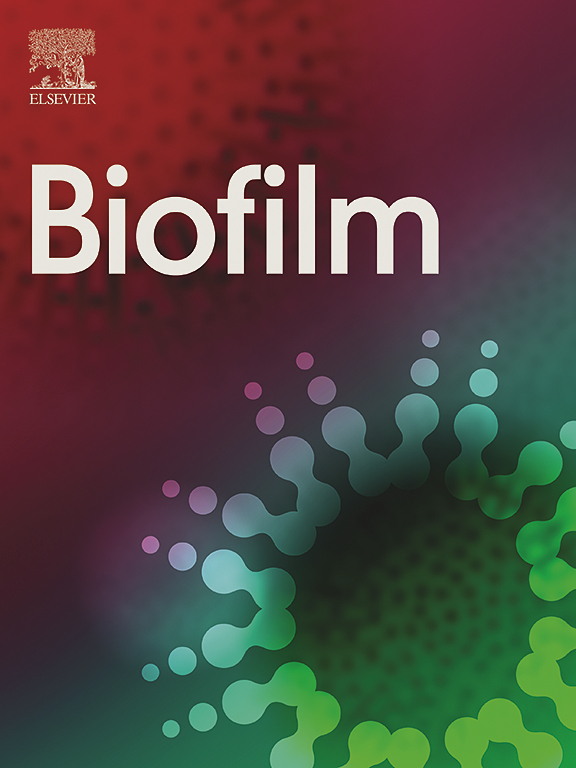A fully automated model to form “dry surface biofilms” under optimal dehydration conditions. application to Enterobacteriaceae in healthcare settings
IF 4.9
Q1 MICROBIOLOGY
引用次数: 0
Abstract
Over ten years ago, bacteria attached to surfaces and surrounded by extracellular polymeric substances were observed on dry surfaces in intensive care units. These structures were named "dry surface biofilms" (DSBs). Most in vitro models used to study “DSBs” alternate long hydration phases with short periods of desiccation, producing "semi-dehydrated DSBs" that differ from the conditions in healthcare settings.
Our aim was to create a model that could produce "DSBs" under optimal dehydration conditions and apply it to Enterobacteriaceae. These bacteria are commonly responsible for healthcare-associated infections in our hospital, yet they have received little attention in the context of "DSBs." We developed a fully automated model that mimics the splashing of respiratory secretions by repeatedly nebulizing an inoculum of contaminated artificial saliva. Hydration phases lasted 2 s every 6 h. We investigated the microscopic aspect, mean surface coverage, bacterial culturability and membrane integrity.
After validating the model with methicillin-resistant Staphylococcus aureus (MRSA), we tested wild-type Enterobacter cloacae, wild-type Klebsiella pneumoniae and extensively drug-resistant (XDR) Klebsiella pneumoniae. The latter formed compact dried inocula with the highest surface coverage (29.7 %), containing curled-up bacteria alongside a low number of culturable cells (3 log10). Conversely, dried S. aureus inocula covered a lower surface (10.9 %) but contained more culturable cells (6 log10), which persisted for more than two months. After several weeks of storage, even the samples containing no more culturable bacteria showed bacteria with intact membranes. Subsequent studies must further assess in depth the composition of these deposits and the viability of the bacteria they contain.
在最佳脱水条件下形成“干燥表面生物膜”的全自动模型。应用于肠杆菌科在医疗保健设置
十多年前,在重症监护病房的干燥表面上观察到附着在表面并被细胞外聚合物物质包围的细菌。这些结构被命名为“干表面生物膜”(DSBs)。大多数用于研究“dsb”的体外模型交替进行长水合阶段和短时间的干燥,产生与医疗环境条件不同的“半脱水dsb”。我们的目的是建立一个可以在最佳脱水条件下产生“DSBs”的模型,并将其应用于肠杆菌科。这些细菌通常是我们医院医疗保健相关感染的原因,但在“DSBs”的背景下,它们很少受到关注。我们开发了一个完全自动化的模型,通过反复雾化受污染的人工唾液来模拟呼吸道分泌物的飞溅。水化阶段每6 h持续2 s。我们考察了微观方面,平均表面覆盖率,细菌培养率和膜完整性。在用耐甲氧西林金黄色葡萄球菌(MRSA)验证模型后,我们测试了野生型阴沟肠杆菌、野生型肺炎克雷伯菌和广泛耐药肺炎克雷伯菌。后者形成紧凑干燥的接种物,表面覆盖率最高(29.7%),含有卷曲的细菌和低数量的可培养细胞(3 log10)。相反,干燥的金黄色葡萄球菌接种物覆盖较低的表面(10.9%),但含有更多的可培养细胞(6 log10),持续时间超过两个月。经过几周的储存,即使是不含可培养细菌的样品也显示出细菌的膜完好无损。随后的研究必须进一步深入评估这些沉积物的组成和它们所含细菌的生存能力。
本文章由计算机程序翻译,如有差异,请以英文原文为准。
求助全文
约1分钟内获得全文
求助全文

 求助内容:
求助内容: 应助结果提醒方式:
应助结果提醒方式:


